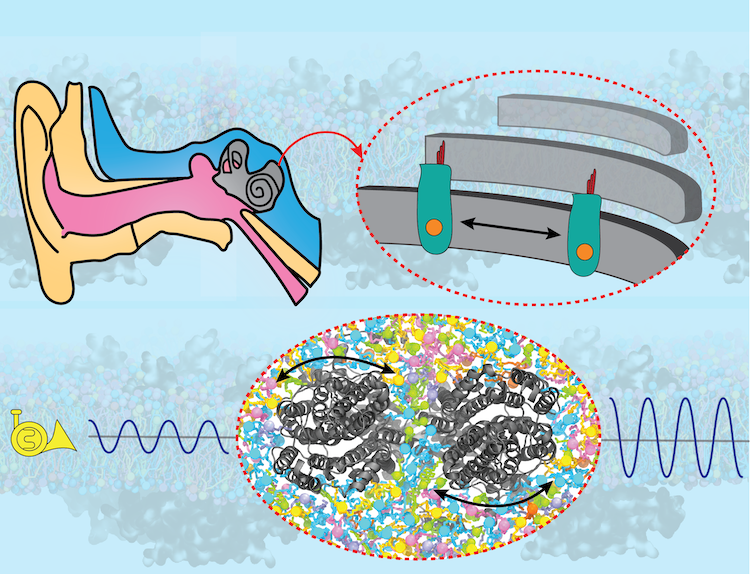Highlights of our Work
2025 | 2024 | 2023 | 2022 | 2021 | 2020 | 2019 | 2018 | 2017 | 2016 | 2015 | 2014 | 2013 | 2012 | 2011 | 2010 | 2009 | 2008 | 2007 | 2006 | 2005 | 2004 | 2003 | 2002 | 2001
Sound amplification is a key step in hearing, without which the brain would not detect the majority of sounds generated in our surroundings. The key protein responsible for sound amplification is a motor protein called prestin in the inner ear. After decades of research, high-resolution structures of prestin were recently obtained by cryo-EM, revealing how the protein's shape change in response to electrical signals "shakes" the hair cells in the inner ear, thereby amplifying the sound to the level that is detectable by neurons. In collaboration with structural biologists at Oregon Health and Science University who solved the protein structures, and employing NAMD and VMD, the Center's researchers shed light on how prestin transmits its structural change to the cellular membrane and thereby shakes the hair cell in our auditory system. Read more about the study in Cell and in the U. Illinois Biophysics Press Release.




